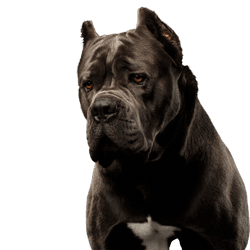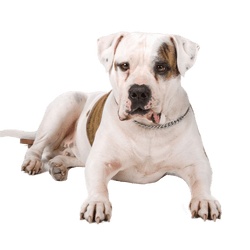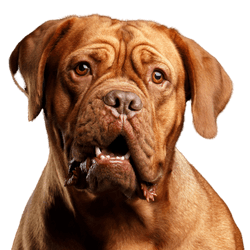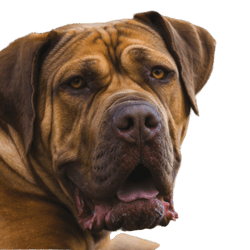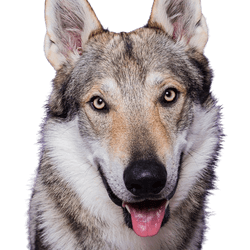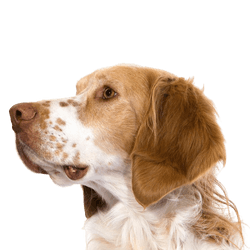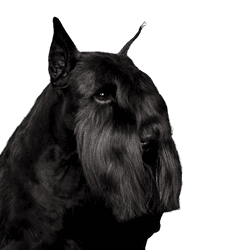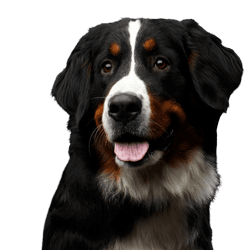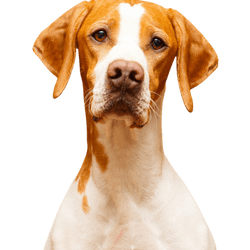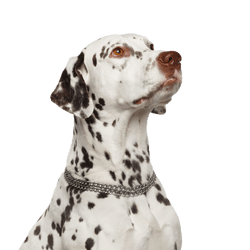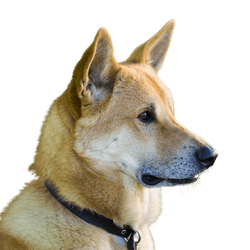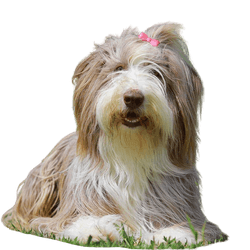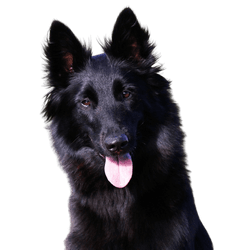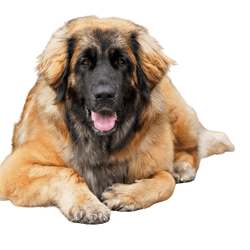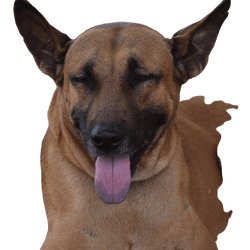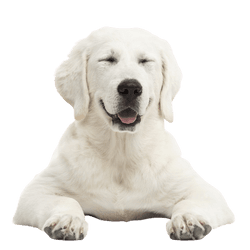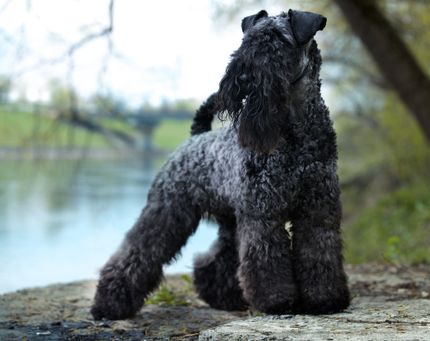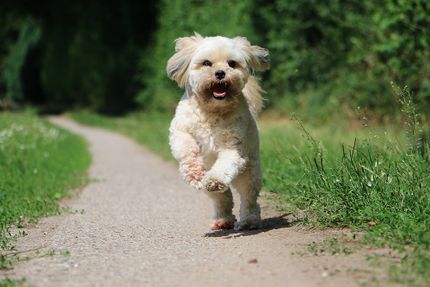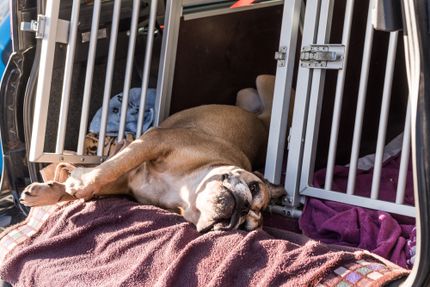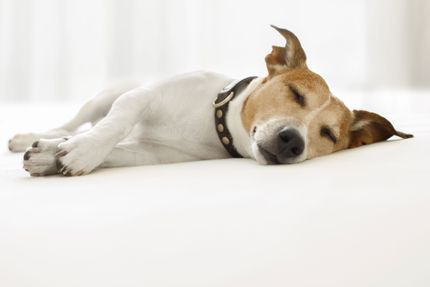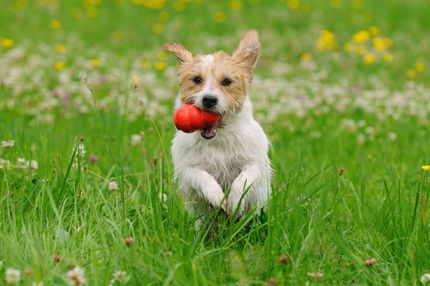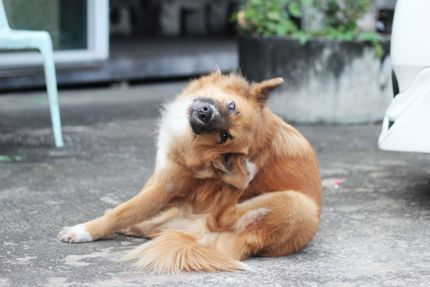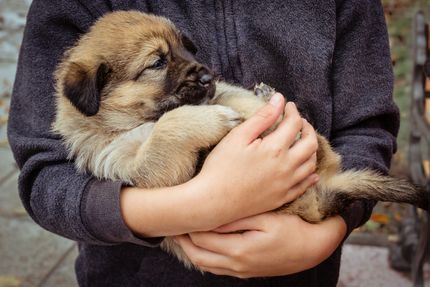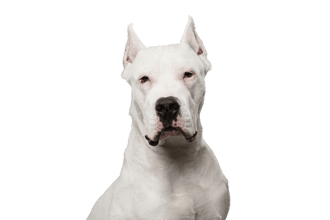
Dogo Argentino Breed description: Character & Co
Dogo Argentino
Facts & Origin
A snow-white Dogo Argentino puppy will make the heads of many lovers of the breed turn with its charm. But socialising and training them are a challenge due to their distinct character. Here you can find out more about why this is the case and what you still need to know about the Argentine Dogo.
Origin of the Dogo Argentino
Antonio Nores Martinez began breeding the Dogo Argentino in 1928, when the Argentine physician wanted to create a fearless, muscular big game hunter. Hunting targets of the new breed were supposed to be panthers and pumas. For this purpose, first the genes of Bull Terrier, Mastiff and Bulldog were added to the gene pool of the dog breed. But the relentless hunter proved to be far from being suitable for families. Therefore, his first breeder crossed other dog breeds with the desired traits. In German Dogo Argentino means "Argentine Mastiff".
The Dogo Argentino and its breed characteristics
- FCI Standard: Dogo Argentino (292); Group 2 Pinscher and Schnauzer - Molossoids - Swiss Mountain and Cattle Dogs; Section 2 Molossoids; 2.1 Great Dane dogs
- Appearance: Tall with a broad chest and strong build
- Breeding forms: uni-coloured white, occasionally with a dark spot on the head; under the very short coat dark, patchy skin pigmentation
- Other body characteristics: athletic build with a strong back, muscular legs and overall medium proportions; long, thin tail, which hangs down naturally
- Large head in good proportion to the muscular body
Use of the Dogo Argentino as a list dog
The responsible handling of an Argentine Mastiff was unfortunately not always a given in the last decades. Because of incidents in the past, there are now different regulations for the dog breed:
- Keeping, breeding and importation prohibited: Denmark, partly Switzerland (Valais, Geneva)
- Import prohibited: Australia, Portugal, New Zealand, Romania, Denmark, Singapore, Iceland, Ukraine
- On the breed list with conditions: Switzerland (ten out of 13 cantons) - in eight cantons only with keeping permission -; Austria (federal states Vienna - with dog leading license -, Lower Austria - with certificate of competence -, Vorarlberg - with special permission of the mayor -)
- Breed list category 2: Germany (Baden-Württemberg, Berlin, Bavaria, Brandenburg, Hessen, Hamburg, North Rhine-Westphalia)
Use of the Dogo Argentino
From the beginning the Dogo Argentino was bred as a hunting dog. More recently, its fearlessness and independent way of taking action has also proven to be an advantage when used as a guard dog. You can also buy a Dogo Argentino as a demanding family dog. In places it is considered a list dog, you can prove its non-hazardousness by providing a character test. Otherwise, the keeping of this strong-willed dog is subject to conditions. A well-behaved Argentine Mastiff is certainly still used as a blood hound or tracking dog. The training for this should be carried out consistently by professional animal trainers from puppy age on.
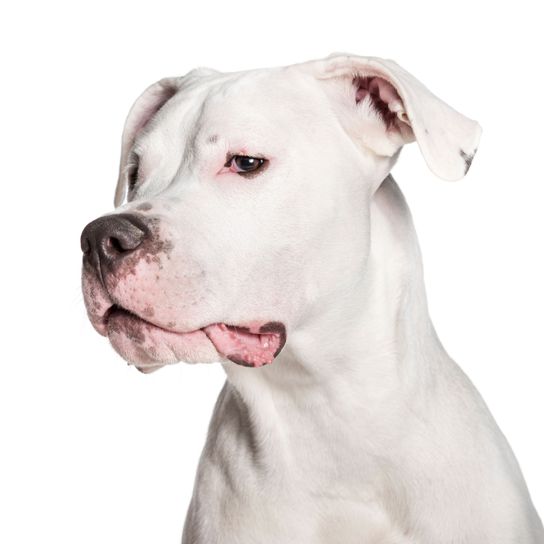
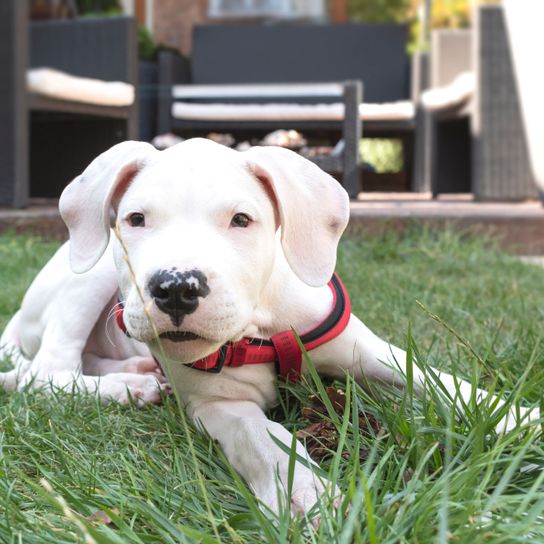

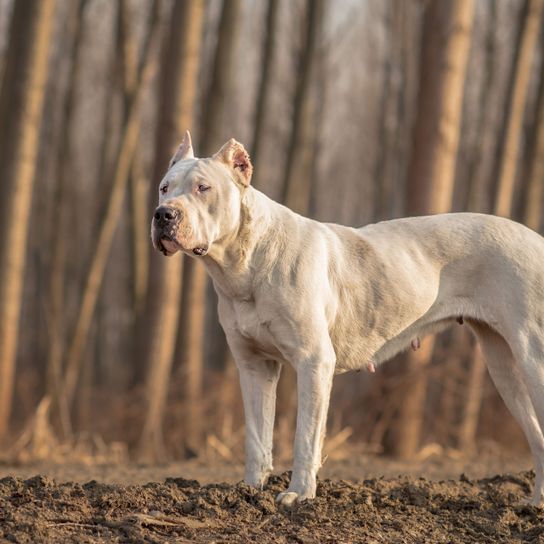
| Alternate Name | Argentine Dogo, Argentine Mastiff |
| Origin | Argentina |
| Life expectancy | 10 - 12 years |
| Care requirements | low-maintenance |
| Activity level | average |
| FCI group | Molossian type |
| AKC group | working group |
| KC group | not recognised |
Attitude, character and temperament of the breed
Character of the Dogo Argentino
The character of the Dogo is formed at an early age, largely through the example of the parent animals. From them, the Dogo Argentino puppy learns the close relationship to "its humans". It will guard them adamantly from potential danger. But the list dog also likes to cuddle within its familiar surroundings and is extremely eager to move. It is rather indifferent towards strangers. However, you must consistently train them to develop a calm social behaviour towards other dogs from puppy age onwards. You can hold back its originally bred hunting instinct with equally consistent training, but you cannot suppress it due to breeding characteristics.
Attitude and characteristics of the Dogo Argentino
Despite further development in breeding, the keeping of a Dogo Argentino still comes with a great challenge regarding your self-confidence and consistency as an owner. First of all, your Dogo Argentino puppy should not have to wait around to be stimulated in a city apartment. A living area with a lot of outside running opportunity in the countryside or at least outside the city gates is a better environment for them. Their training must start early and should not be inconsistent even in adulthood. Therefore the Argentine Mastiff is only suitable for being kept by explicitly dog-experienced people. On the other hand however, their physical care is simple. Regular brushing of the very short hair is good for the skin and strengthens your bond to your four-legged friend.
Character
Usage
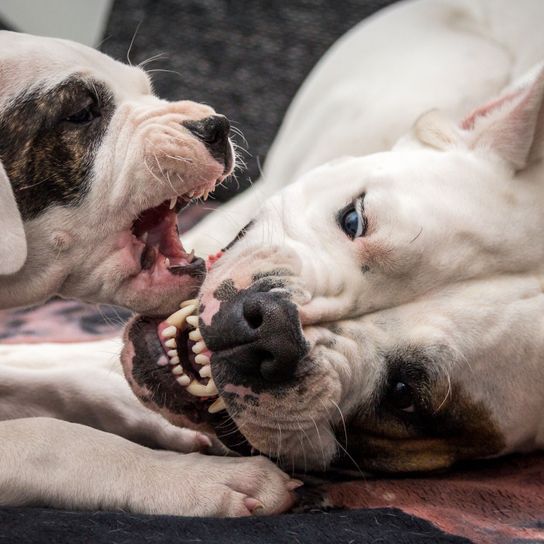
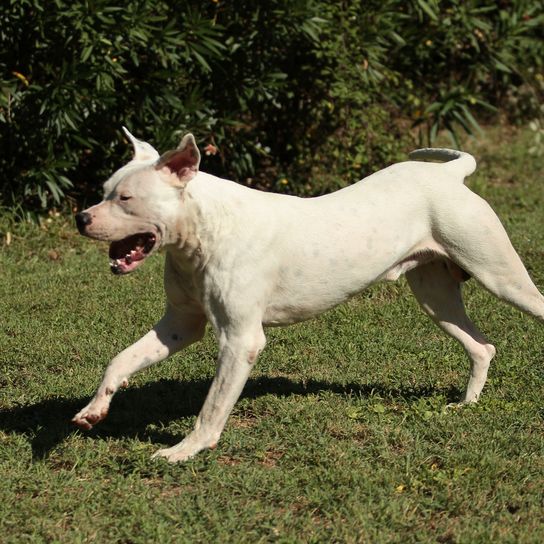
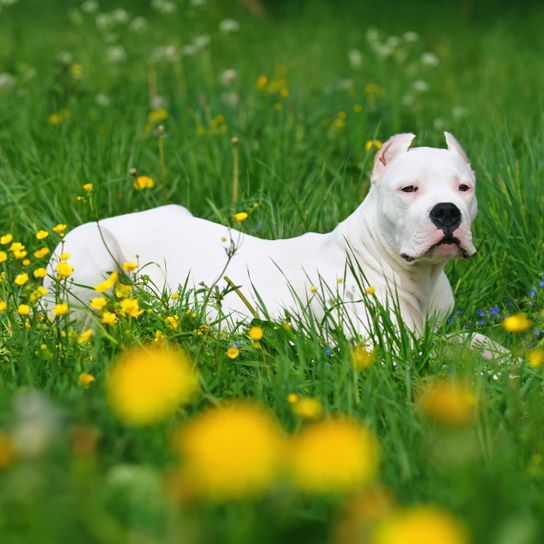
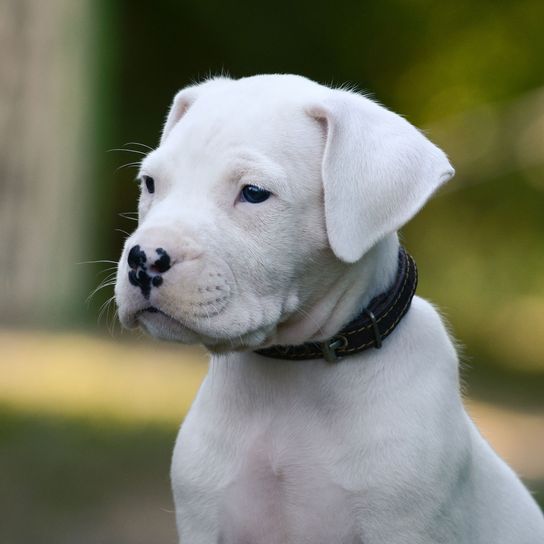

Health and breeding information
Typical diseases of the Dogo Argentino breed
A common congenital disease of the Great Dane is deafness. A responsible breeder will show you if this is present before you want to buy a Dogo Argentino. If you are not sure, it is best to take your puppy to the vet for a thorough check up. At the same time, your puppy will be examined for hip joint dysplasia. However, in this active breed, HD is often not apparent until adulthood.
Dogo Argentino breeding or rescuing a Dogo Argentino?
Dogo Argentino breeding is prohibited in many countries. Unfortunately, due to great demand in the areas of hunting, dog competitions and protection dogs, many Argentine Mastiffs end up on dubious markets or in the worst case in animal shelters. The proud and beautiful appearance of the white Molossoids plays a sad role in this development. If you have the necessary dog experience, it is better to go to rescue stations and animal shelters instead of breeding your own dog. Many of the animals given away there are well socialised with other dogs and therefore in the future, with necessary training, as loyal and cuddly as a Dogo from the breeder.


Look and coat of the Dogo Argentino
The appearance of the Dogo Argentino is well-proportioned and self-confident. The white coat over the dark pigmented skin is smooth, soft and at most two centimetres long. In summer, it often becomes so thin that pigment spots shine through. For a long time, the ears of the Dogo Argentino used to be docked. In Germany and some other EU countries this is now forbidden. Unfortunately, there are still lovers of the breed, who simply buy a docked Dogo Argentino in countries where this is not prohibited.
Height, weight and life expectancy of the Dogo Argentino
- Size: 60 to 68 centimetres (bitches with a maximum of 65 centimetres are slightly smaller)
- Weight: 36 to 45 kilograms
- Average age: Ten to 12 years
| Fur length | short |
| Fur | flat coated |
| Ear shape | Floppy Ear |
| Tail | lang |
| Anatomy | muscular, massive |
| Size ♀ | 60 - 65 cm |
| Weight ♀ | 40 - 45 kg |
| Size ♂ | 60 - 68 cm |
| Weight ♂ | 35 - 40 kg |
| Suitable For | - |
Colors




Known Diseases
Hip dysplasia (HD)
The hip dysplasia or hip joint dysplasia of the dog (HD) is a maldevelopment of the hip joint.
Numbness
Often occurs in old age.
FAQ
-
The Dogo Argentino is considered a dangerous dog breed and is popularly called "fighting dog". He is on some lists in Germany, Austria and Switzerland.
Other large dogs
Useful Articles
You can find articles that might interest you in the dogbible blog to match your favorite breed.
Visit our magazineto stay up to date on dog trends.
To find out more, view our Privacy Policy
Find here the breed that suits you and find out what character traits it has. Here you can also learn more about the origin, size and weight of your favorite breeds.
Matching your favorite breed, you'll find articles that might interest you on the dogbible dog blog.
Merle - the special color in certain dog breeds
